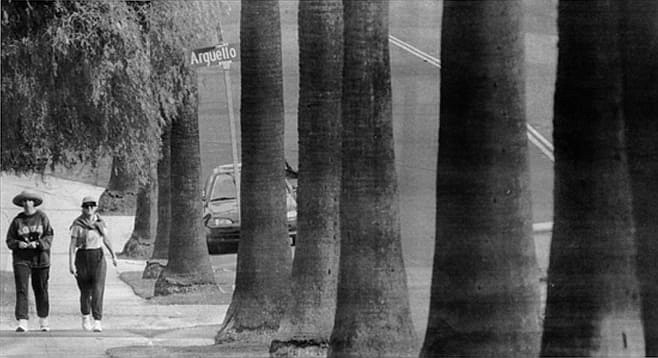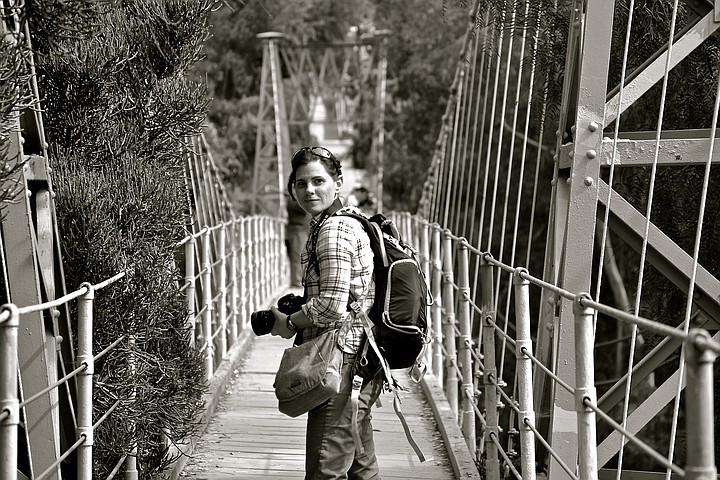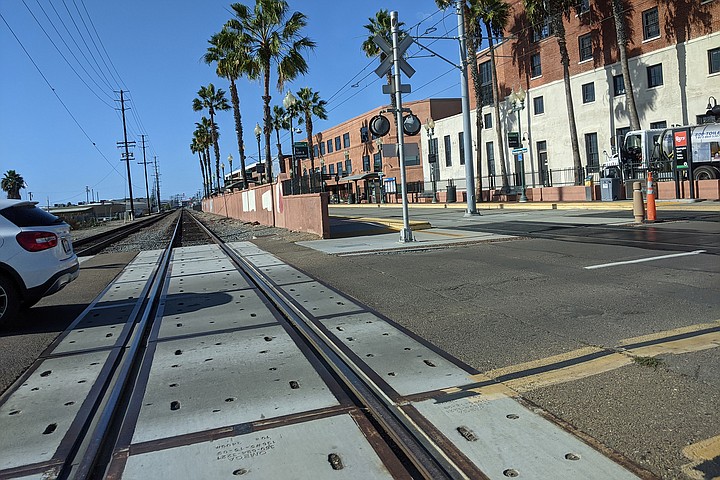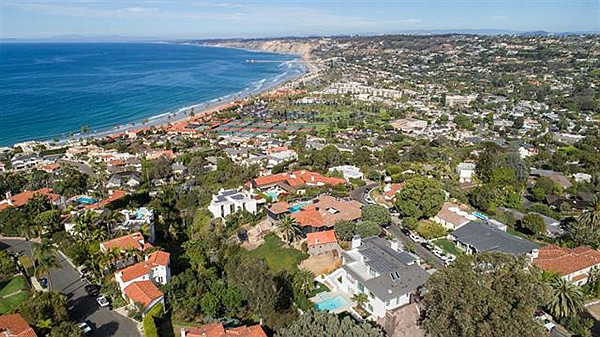 Facebook
Facebook
 X
X
 Instagram
Instagram
 TikTok
TikTok
 Youtube
Youtube

Many uptown inhabitants feel left out of community planning, which is now represented by Uptown Planners, a group whose voting members are mostly homeowners.
The San Diego City Council’s land use and housing committee last week voted 4-0 to recognize the application of a new group, Vibrant Uptown, also known as the Uptown Community Planning Group, a majority of whose members are renters.

"I think having a balance between renters and homeowners is good. That's how the uptown community is configured," said Zach Farrell, a long-term renter in University Heights.
"In addition, I've seen the Uptown Planners group sort of arbitrarily delay a lot of housing projects."
Uptown, located just north of downtown, is a constellation of some of the city's most diverse neighborhoods — Hillcrest, Mission Hills, Bankers Hill/Park West, University Heights, Middletown, and the Medical Complex — but diversity in both planning groups is still lacking.

Both are majority white, and exceed the percentage of white residents for the overall community, city staff said. Uptown Planners don't report a single black voting member while Vibrant Uptown had only one when the application was submitted. Pacific Islander, Hispanic, and American Indian racial and ethnic groups make up about 31 percent of the uptown population — yet neither planning group reports any representation among them.
Only one member with two or more racial backgrounds sits on the Uptown board; Vibrant Uptown does not have any.
"We have to build the structures in our planning groups to make sure diversity thrives," said Ben Nichols of the Hillcrest Business Association, which supports Vibrant Uptown. "Hillcrest businesses are seeking clear representation for the neighborhoods of uptown," with residential and business seats that reflect each one's population. "Hillcrest makes up the largest part of uptown yet is consistently under-represented on the Uptown Planners."

Neighborhoods should vote for their own seats, he said, but often Hillcrest candidates "get swamped by a large voting bloc from another neighborhood."
Council policy states that planning groups should "to the greatest extent possible represent the entire community." Seats are open to eligible residents, nonprofits, business owners, homeowners, and renters.
Uptown Planners have 15 undesignated seats and one appointed youth seat. Vibrant Uptown has 18 voting members with two non-voting seats representing large employers. The 18 voting member seats are designated — one property owner seat from each of the six neighborhoods; six renter seats; five business seats and one non-profit.
When it comes to age, uptown's majority is 40-49 years — better represented by Vibrant Uptown whose members are mostly 30-39, while Uptown Planners fall into the 70-79 year age range, and have higher incomes. A small percentage of Vibrant Uptown members are in the low income category of $15,000-$20,000.

The new group aims to build its outreach to be inclusive of the entire community, while the existing one is trying to revamp its image to combat low voter turnout.
Despite the 50,000 residents uptown, recent Uptown Planners voter counts show a steep decline, from less than 500 in March 2023 to 235 in March 2024.
Mark Johnson, University Heights, a member of Uptown Planners, called the "proposed takeover of our community's voice" undemocratic. Vibrant Uptown's ideas, based on numerous surveys and planning meetings, "are very contentious and unpopular."

In all, the city recognized 39 planning group applications, including the La Jolla Community Planners, an upstart group hoping to oust the existing La Jolla Community Planning Association. The rival proposal would increase the diversity of members, shorten board term limits, and focus on outreach and growing attendance. The city council in May will choose between the two rival and existing groups.
La Jolla district 1 councilman Joe LaCava helped jumpstart planning group reform in 2021.
Councilmember Whitburn, who made the motion to recognize Vibrant Uptown, said it would help ensure a voice for each neighborhood.
"The two proposed structures in front of us to represent uptown take a very different approach," he said. While the existing group calls for members to be elected at large, its rival calls for them to be elected by neighborhood — and guarantees each neighborhood two seats.
"One for a property owner and one for a renter."


Many uptown inhabitants feel left out of community planning, which is now represented by Uptown Planners, a group whose voting members are mostly homeowners.
The San Diego City Council’s land use and housing committee last week voted 4-0 to recognize the application of a new group, Vibrant Uptown, also known as the Uptown Community Planning Group, a majority of whose members are renters.

"I think having a balance between renters and homeowners is good. That's how the uptown community is configured," said Zach Farrell, a long-term renter in University Heights.
"In addition, I've seen the Uptown Planners group sort of arbitrarily delay a lot of housing projects."
Uptown, located just north of downtown, is a constellation of some of the city's most diverse neighborhoods — Hillcrest, Mission Hills, Bankers Hill/Park West, University Heights, Middletown, and the Medical Complex — but diversity in both planning groups is still lacking.

Both are majority white, and exceed the percentage of white residents for the overall community, city staff said. Uptown Planners don't report a single black voting member while Vibrant Uptown had only one when the application was submitted. Pacific Islander, Hispanic, and American Indian racial and ethnic groups make up about 31 percent of the uptown population — yet neither planning group reports any representation among them.
Only one member with two or more racial backgrounds sits on the Uptown board; Vibrant Uptown does not have any.
"We have to build the structures in our planning groups to make sure diversity thrives," said Ben Nichols of the Hillcrest Business Association, which supports Vibrant Uptown. "Hillcrest businesses are seeking clear representation for the neighborhoods of uptown," with residential and business seats that reflect each one's population. "Hillcrest makes up the largest part of uptown yet is consistently under-represented on the Uptown Planners."

Neighborhoods should vote for their own seats, he said, but often Hillcrest candidates "get swamped by a large voting bloc from another neighborhood."
Council policy states that planning groups should "to the greatest extent possible represent the entire community." Seats are open to eligible residents, nonprofits, business owners, homeowners, and renters.
Uptown Planners have 15 undesignated seats and one appointed youth seat. Vibrant Uptown has 18 voting members with two non-voting seats representing large employers. The 18 voting member seats are designated — one property owner seat from each of the six neighborhoods; six renter seats; five business seats and one non-profit.
When it comes to age, uptown's majority is 40-49 years — better represented by Vibrant Uptown whose members are mostly 30-39, while Uptown Planners fall into the 70-79 year age range, and have higher incomes. A small percentage of Vibrant Uptown members are in the low income category of $15,000-$20,000.

The new group aims to build its outreach to be inclusive of the entire community, while the existing one is trying to revamp its image to combat low voter turnout.
Despite the 50,000 residents uptown, recent Uptown Planners voter counts show a steep decline, from less than 500 in March 2023 to 235 in March 2024.
Mark Johnson, University Heights, a member of Uptown Planners, called the "proposed takeover of our community's voice" undemocratic. Vibrant Uptown's ideas, based on numerous surveys and planning meetings, "are very contentious and unpopular."

In all, the city recognized 39 planning group applications, including the La Jolla Community Planners, an upstart group hoping to oust the existing La Jolla Community Planning Association. The rival proposal would increase the diversity of members, shorten board term limits, and focus on outreach and growing attendance. The city council in May will choose between the two rival and existing groups.
La Jolla district 1 councilman Joe LaCava helped jumpstart planning group reform in 2021.
Councilmember Whitburn, who made the motion to recognize Vibrant Uptown, said it would help ensure a voice for each neighborhood.
"The two proposed structures in front of us to represent uptown take a very different approach," he said. While the existing group calls for members to be elected at large, its rival calls for them to be elected by neighborhood — and guarantees each neighborhood two seats.
"One for a property owner and one for a renter."
Comments